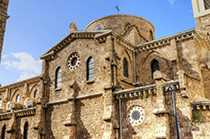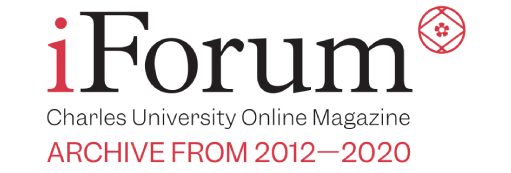Katie Tener • 27 October 2015
Actual Situation of Christians in the Middle East and Lebanon
Despite a power shortage, around 25 people gathered in the Protestant Theological Faculty to listen to Professor Gaby Abou Samra discuss the actual situation of Christians in the Middle East and Lebanon on Tuesday, October 27. Professor Abou Samra is a scholar, author, priest and monk. Being from Lebanon, and living in a Christian village surrounded by Muslim settlements, he would be speaking from personal experience.
The discussion started with the bold claim that the current situation was the same as it had been in Middle Ages and thus commenced a brief history of the Christian and Islamic religions in the Middle East.

Initially, despite denominational and state divides, the area had been prosperous and home to religious freedom. However, in the last 10 years of the Prophet Muhammed’s life, 622-632 AD, the Christian church began to be persecuted. The physical presence of Christians was constrained, especially in Mecca, and the Quran was used to justify the conversion to Islam by force and heavy taxes imposed on the Christian population. Both Christians and Jews paid half their income to Muhammed.
In the years following the Prophet’s death, those nearest to him carried on these practices. The Pact of Umar, a treaty between Muslims and Christians in Syria, Mesopotamia and Jerusalem, enforced several regulations on Christians including church building restrictions, the inability to adopt a title of honour and having to give up their seat for a Muslim member of the society.
Other important historical events in relation to the relationship between Muslims and Christians were also discussed briefly. These included the requirement of Christians and Jews to wear a yellow marking coat in 850 AD and the destruction of 80,000 churches in Egypt during the 11th century. The local language decree in the 12th century prohibited Christians from worshipping in any language bar Arabic, whilst violent attacks against Christians in Syria and Lebanon in 1860 resulted in approximately 100,000 deaths.
Parallels were drawn between these events and the actions of ISIS today, including the painting of the letter “N” on Christian households. Today, Christians are given three options - flee, covert or die - and the population of Christians in the Middle East is shrinking faster than ever. There are now only around 1.1 million Christians in Syria.
Professor Abou Samra stated that many Christians in the region feel that they are stuck “between a rock and hard place” as in their own countries they are considered as Western spies but that in reality the West is indifferent to their persecution and demise. This led to the pertinent topic of refugees being raised in the closing question and answer section. With a population of 4 million, Lebanon has a refugee population of 2 million. This has caused numerous social and citizenship issues, but it was stated that several organisations are present and helping to combat the problems.
During this finishing session, the future of these two religious communities was debated. Abou Samra had a self-declared pessimistic outlook on the situation, stating that he saw no hope for fruitful discussions between the two sides. Despite the existence of friendships and relationships between Muslims and Christians, he believed that the warring was only going to get worse. Several members of the audience were more optimistic and believed that it was the presence of these bonds that would triumph over the terror and that we should be wary of not only the rise in Islamic extremism but also Islamophobia.
Overall, this was a very informative session, praised by those in attendance and it was interesting to hear of such a relevant and broadcasted topic from personal experience.
|
Katie Tener is a third year undergraduate student from Northern Ireland, the University of Ulster, studying Geography. She loves to travel and learn from different cultures. Her host faculty at Charles University is the Faculty of Science. |
